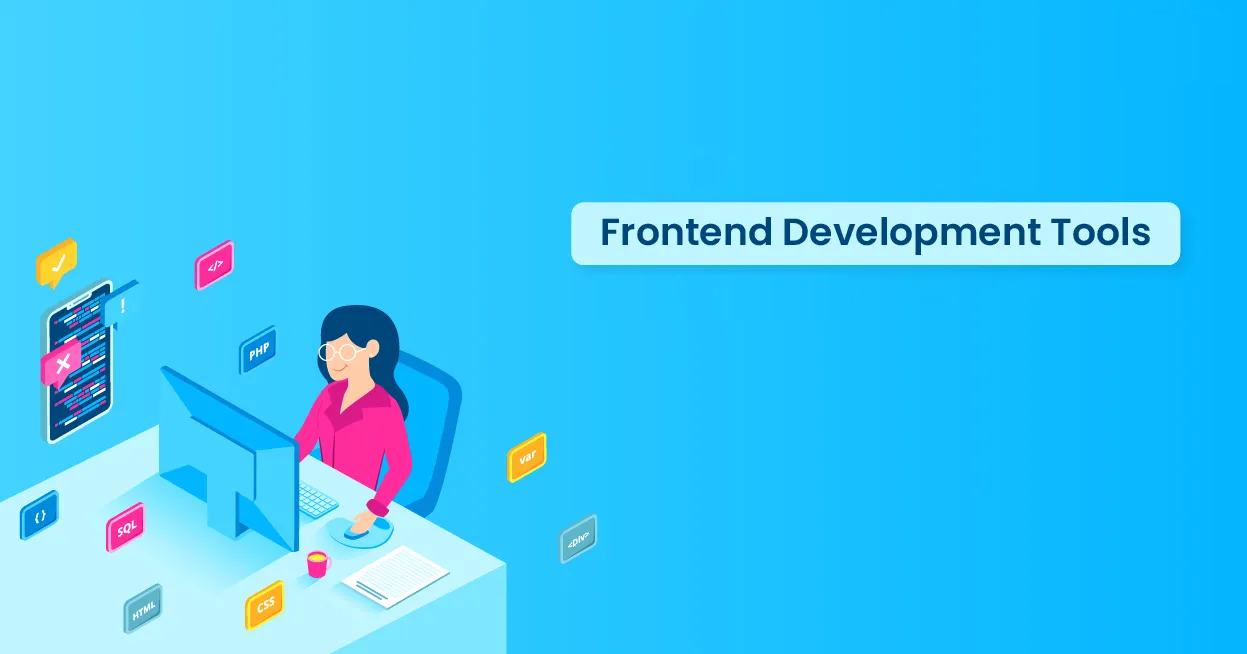Frontend web development is an ever-evolving field that requires developers to stay up-to-date with the latest tools and technologies to remain productive. In this article, we’ll explore five front-end web development tools that can significantly boost your productivity. These tools cover various aspects of front-end development, from design and prototyping to coding and performance optimization.
- Visual Studio Code (VS Code)
Visual Studio Code is a popular code editor developed by Microsoft. It has gained immense popularity among developers due to its versatility and extensive extension ecosystem. VS Code provides a range of features that can enhance your productivity as a frontend developer:
- Intelligent Code Completion: VS Code offers excellent auto-completion for various programming languages and libraries, making it easier to write code quickly and accurately.
- Built-in Git Integration: You can manage version control and collaborate with team members seamlessly using VS Code’s built-in Git features.
- Extensions: VS Code supports a vast array of extensions created by the community. These extensions can add functionality for front-end development tasks such as HTML, CSS, JavaScript, and more.
- Debugging: Debugging frontend code is simplified with VS Code. You can set breakpoints, inspect variables, and step through your code effortlessly.
- Integrated Terminal: VS Code includes a powerful integrated terminal that allows you to run commands and scripts directly within the editor.
- Figma
Figma is a cloud-based design and prototyping tool that has gained popularity for its collaboration capabilities and user-friendly interface. Frontend developers can benefit from using Figma in several ways:
- Collaboration: Figma allows designers and developers to collaborate in real-time on the same design files. This helps bridge the gap between design and development teams, reducing misunderstandings and improving workflow.
- Prototyping: You can create interactive prototypes within Figma, making it easier to visualize and test the user interface before writing a single line of code.
- Design Handoff: Figma provides features that facilitate design handoff to developers. You can export assets, inspect design specifications, and even generate CSS code snippets.
- Component Libraries: Figma enables the creation of reusable design components, which can be particularly useful for maintaining design consistency across your web application.
- Webpack
Webpack is a popular open-source JavaScript module bundler that plays a crucial role in front-end development workflows. It offers several advantages for optimizing your web application’s performance and development process:
- Module Bundling: Webpack bundles JavaScript, CSS, and other assets into optimized files, reducing the number of HTTP requests and improving load times.
- Code Splitting: You can implement code splitting with Webpack, allowing you to load only the necessary code for a specific page or feature, further enhancing performance.
- Hot Module Replacement (HMR): Webpack’s HMR feature allows you to see changes in your code instantly without having to refresh the entire page, speeding up development iterations.
- Plugin System: Webpack’s plugin system is highly extensible, enabling you to integrate various optimization and transformation plugins to tailor your build process.
- Tree Shaking: Webpack can eliminate unused code (tree shaking), resulting in smaller bundle sizes and faster load times for your web application.
- React
React, developed by Facebook, is a JavaScript library for building user interfaces. It has become a standard choice for many front-end developers due to its component-based architecture and strong community support. Here are some reasons why React can boost your productivity:
- Component Reusability: React’s component-based structure promotes code reusability, making it easier to maintain and scale your frontend codebase.
- Virtual DOM: React’s Virtual DOM allows for efficient updates to the user interface, minimizing unnecessary re-rendering and optimizing performance.
- Rich Ecosystem: React has a vast ecosystem of libraries, tools, and extensions, such as React Router for routing and Redux for state management, which can streamline your development process.
- Developer Tools: React offers browser extensions like React DevTools, which provide powerful debugging and profiling capabilities to help you identify and resolve issues quickly.
- Strong Community: React has a large and active community, which means you can find extensive documentation, tutorials, and third-party packages to support your development efforts.
- Lighthouse
Lighthouse is an open-source tool from Google that helps you improve the performance, accessibility, and overall quality of your web applications. It operates as a browser extension or through the command line and offers the following benefits:
- Performance Auditing: Lighthouse analyzes your web application’s performance, providing a detailed report with suggestions for optimization. This includes recommendations for reducing page load times and improving user experience.
- Accessibility Testing: Lighthouse checks your website for accessibility issues, ensuring that it can be used by individuals with disabilities. It highlights areas where improvements are needed to meet accessibility standards.
- Progressive Web App (PWA) Analysis: Lighthouse assesses whether your web app meets the criteria for being a PWA. It offers guidance on implementing PWA features like offline support and push notifications.
- Best Practices: Lighthouse evaluates your website against best practices for web development. Helping you adhere to industry standards and improve code quality.
- SEO Recommendations: Lighthouse provides suggestions to optimize your website’s search engine optimization (SEO). Which can help improve its visibility in search engine results.
In conclusion, these five front-end web development tools can significantly boost your productivity by streamlining. Your workflow, enhancing collaboration, optimizing performance, and ensuring the quality of your web applications. Whether you’re a seasoned front-end developer or just starting your journey, incorporating these tools into. Your toolkit can help you stay competitive and deliver high-quality web experiences to your users.

